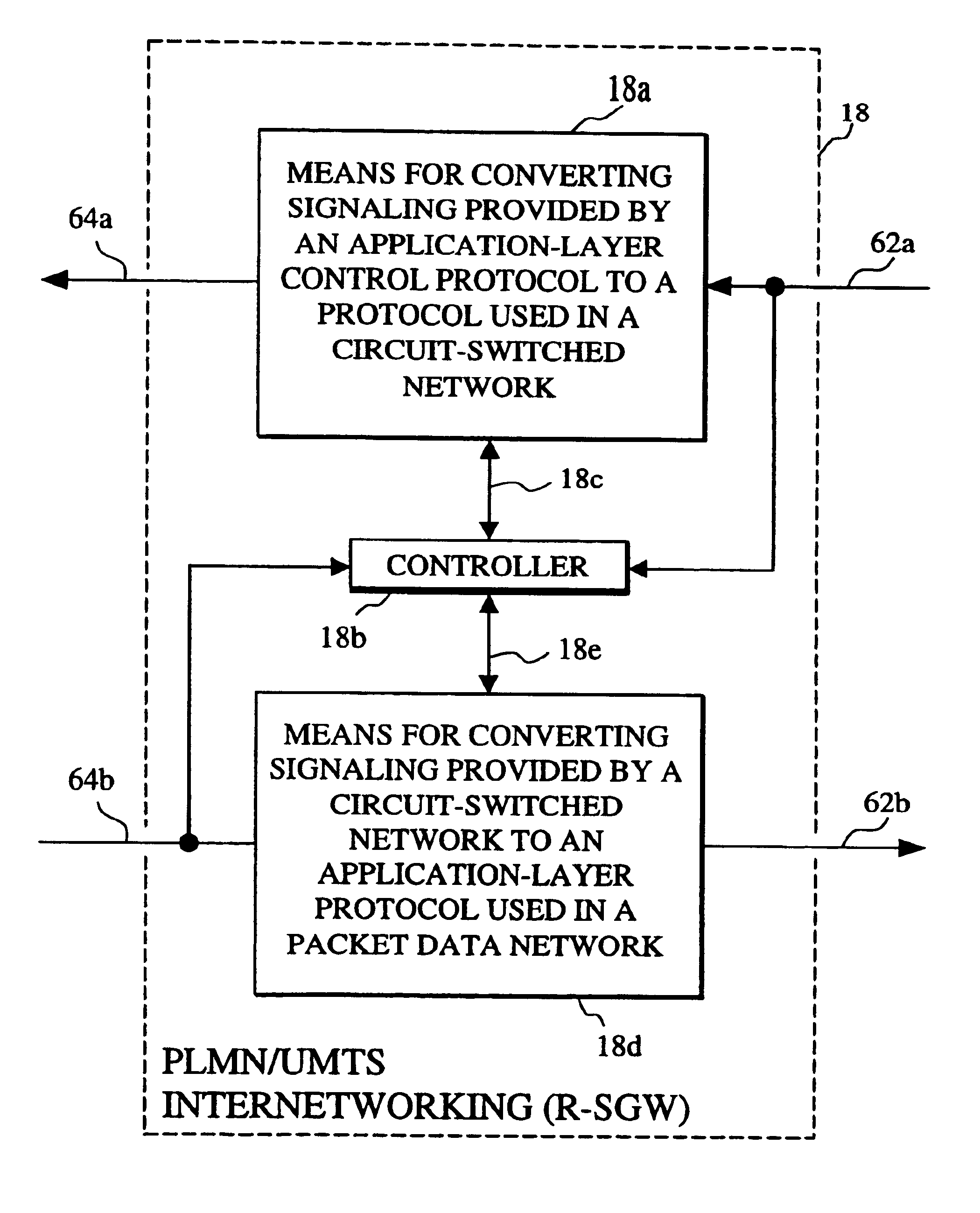Mobile system, terminal and interface, as well as methods for providing backward compatibility to first and second generation mobile systems
a mobile system and backward compatibility technology, applied in the field of third generation mobile telecommunications, can solve the problem of not being able to interoperate the planned third generation system with the older generation of mobile systems
- Summary
- Abstract
- Description
- Claims
- Application Information
AI Technical Summary
Benefits of technology
Problems solved by technology
Method used
Image
Examples
example
[0054]UA->CSCF:[0055]REGISTER sip: Request-URI SIP / 2.0[0056]Via: SIP / 2.0 / UDP IP address[0057]From: sip: public address[user@domain] [E.164 address@CSCFdomain; user=phone][0058]To: sip: public address[user@domain] [E.164 address@CSCFdomain; user=phone][0059]Call-ID: local-ID@host[0060]CSeq: 1 REGISTER[0061]Contact: [0062]Authorization: UMTS[0063]Content-Length:X[0064]Expires: delta-seconds[0065]Content-type: application / sdp[0066]v=0[0067]i=“information of this session”[0068]a=imsi:2345122434[0069]a=msisdn:358951162209[0070]a) The SIP Terminal 10 with Encrypted Mobile User Identity & System Identity multicasts (or uses DHCP for discovering the SIP nearest Proxy Registrar) a REGISTRAR Request. The not shown UA sends the REGISTER request on the line 80 to the CSCF. The REGISTER request may contain an Authorization field (e.g. it is after a 401 Authentication Required response) and the SDP message in the body of the message with the User Information (USIM) as shown below.
[0071]
REGISTER s...
PUM
 Login to View More
Login to View More Abstract
Description
Claims
Application Information
 Login to View More
Login to View More - R&D
- Intellectual Property
- Life Sciences
- Materials
- Tech Scout
- Unparalleled Data Quality
- Higher Quality Content
- 60% Fewer Hallucinations
Browse by: Latest US Patents, China's latest patents, Technical Efficacy Thesaurus, Application Domain, Technology Topic, Popular Technical Reports.
© 2025 PatSnap. All rights reserved.Legal|Privacy policy|Modern Slavery Act Transparency Statement|Sitemap|About US| Contact US: help@patsnap.com



